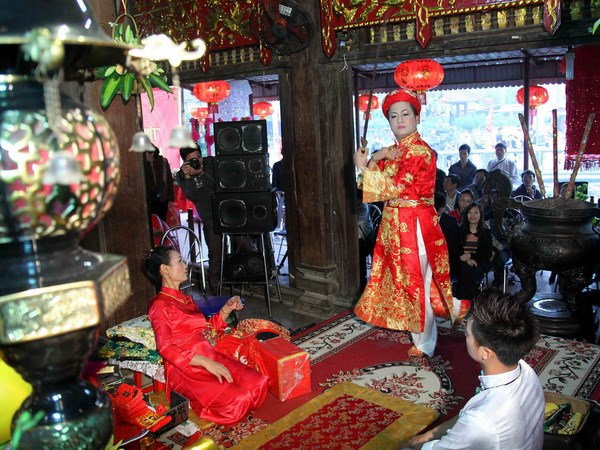Thousands of performers from 250 amateur art troupes from all over the country have flocked to the capital city of Ha Noi to take part in the 2014 Chau Van Singing Festival, Nguyen Khac Loi, Deputy Director of the municipal Department of Culture, Sports and Tourism, said on October 13.

The festival, in its second edition, aims to provide an opportunity for artists to perform the traditional ritual singing in a formal setting while increasing the community’s awareness of the Mother Goddess wordshipping belief, Loi added.
The first round of performances runs from October 15 until November 17 in seven temples throughout Ha Noi, while the best performances will be selected for a final show on November 28-29.
A number of seminars will also be held during the festival to discuss ways to preserve the values of Chau Van singing in today’s modern society.
Chau Van singing, which is recognised as a National Intangible Cultural Heritage, first emerged during the Tran Dynasty (1225-1400) and presumably originated in the northern province of Nam Dinh.
The highly rhythmic form of singing often accompanies “hau dong” (mediumship) during rituals to honour the Mother Goddess and connect to other gods. It is mostly performed at temples and pagodas.
The music and poetry performed in the folk art are blended with a variety of rhythms, tempos and pitches.
The genre also adopts folk songs from the uplands and highlands of the three regions of the country.
The main musical instrument used in the genre is Dan Nguyet, a moon-shaped lute.
Relevant agencies are working on the necessary documents to apply to UNESCO for recognition of the traditional singing genre as an Intangible Culture Heritage of Humanity.